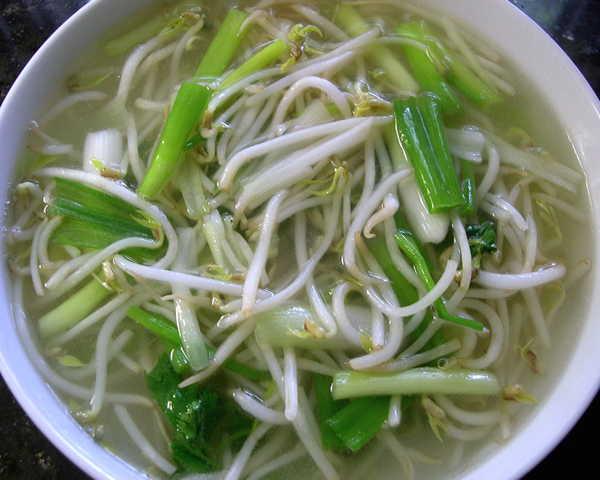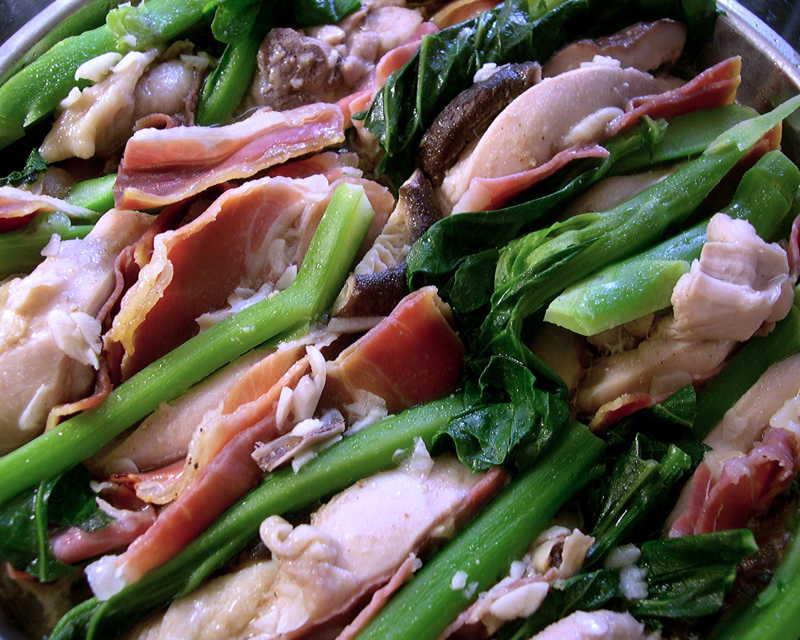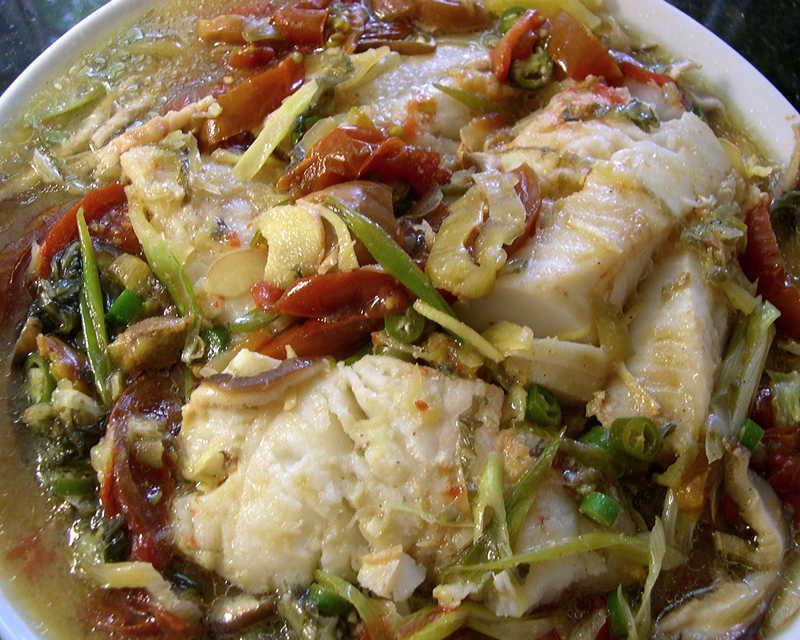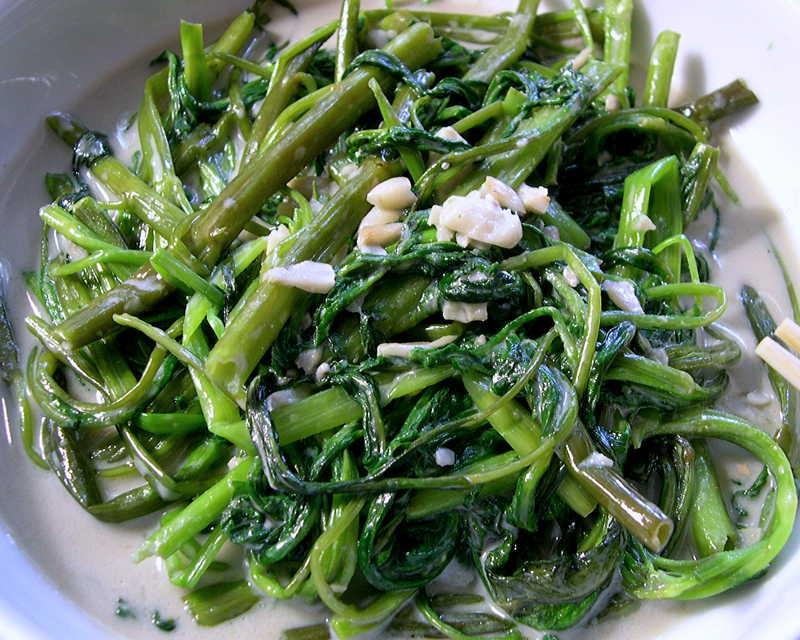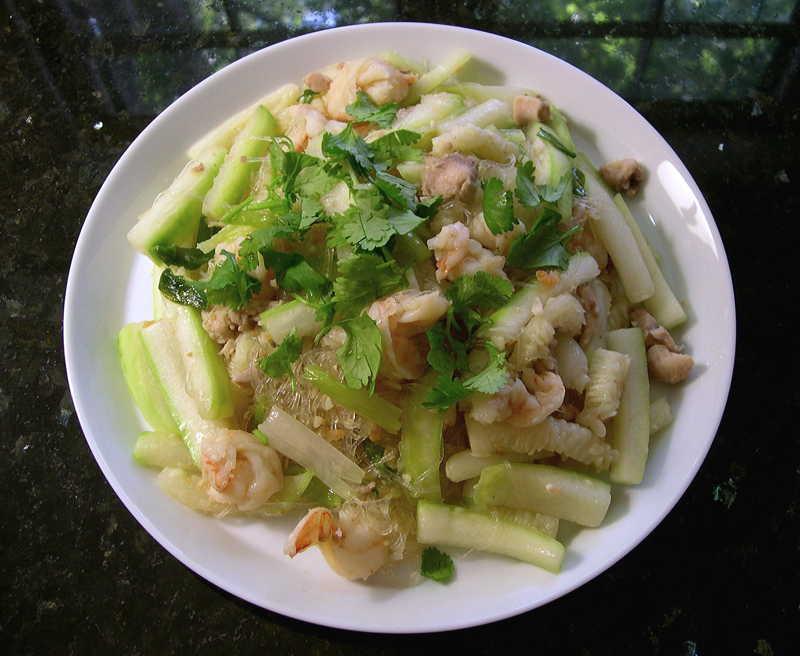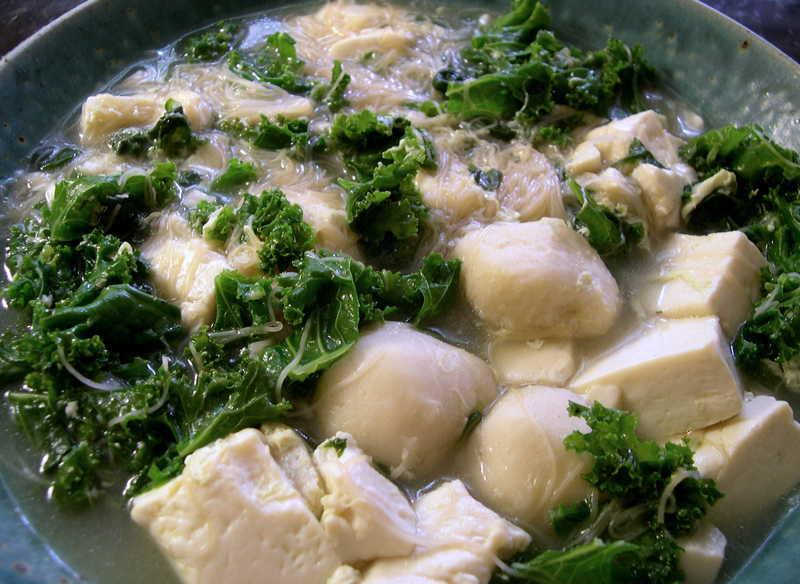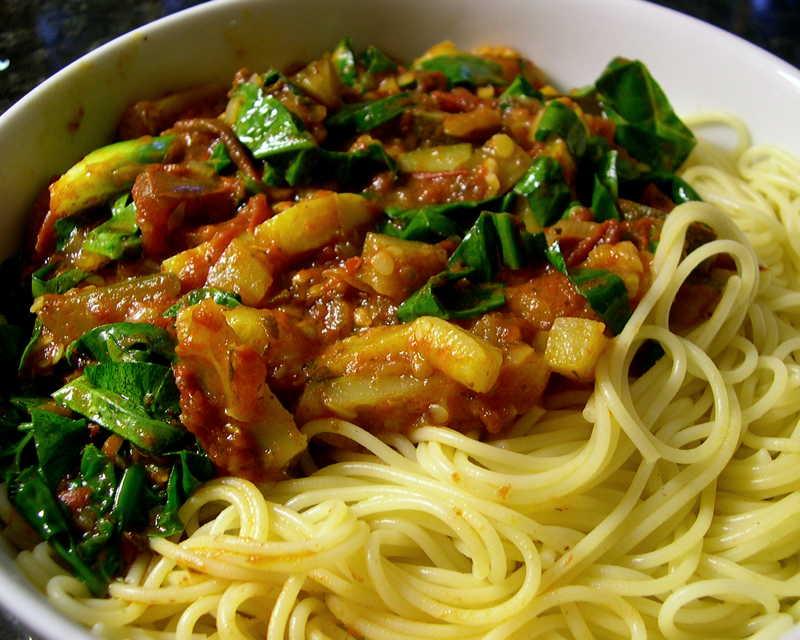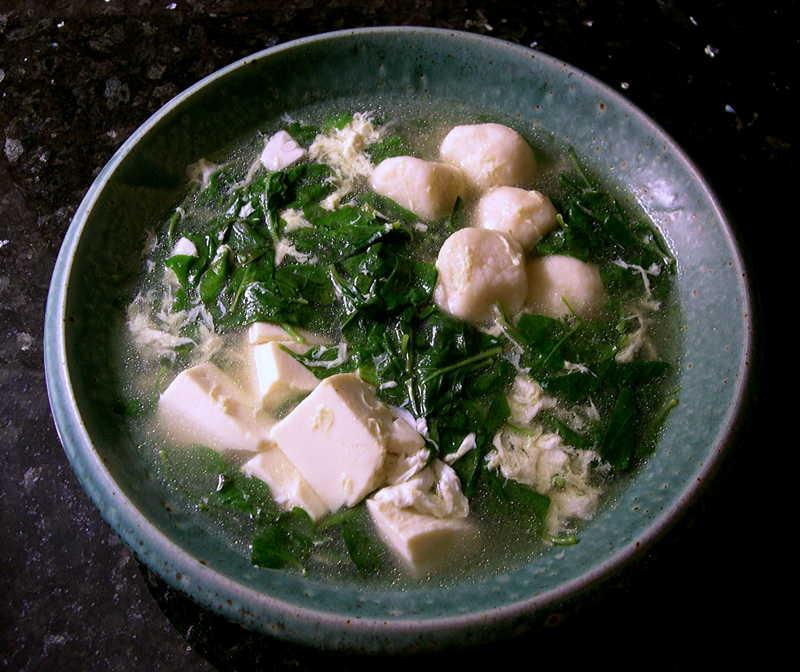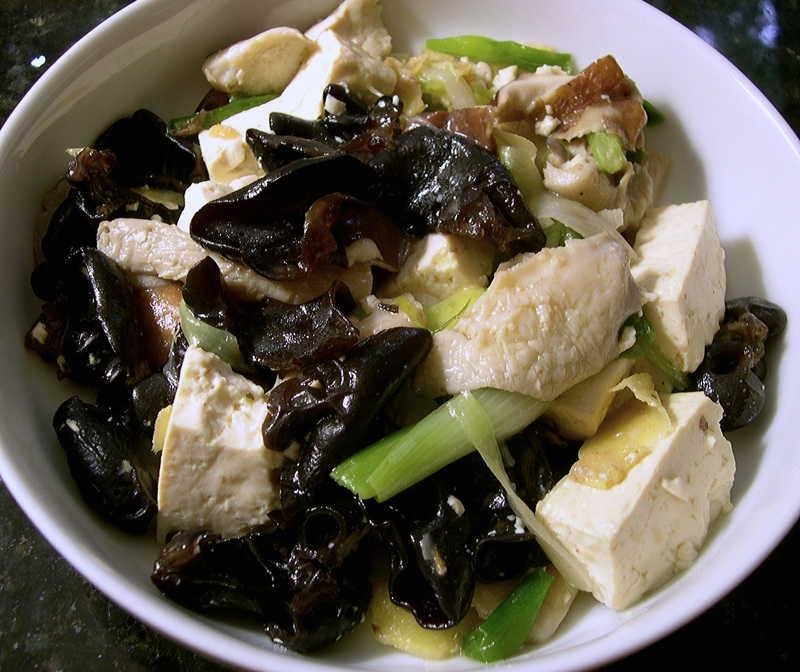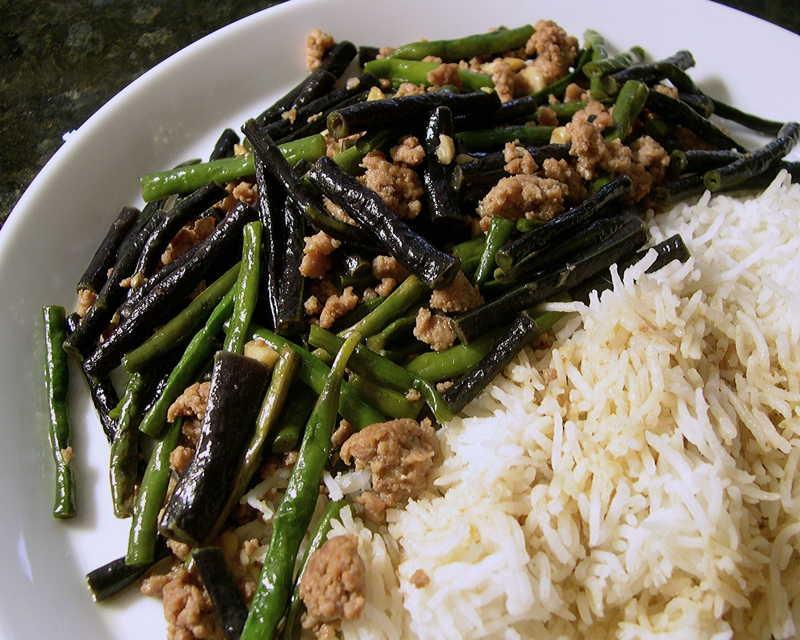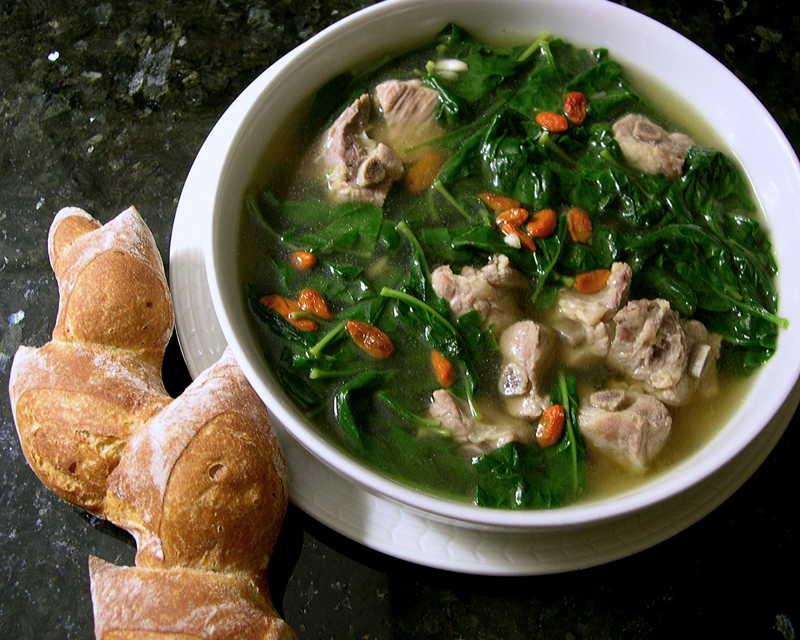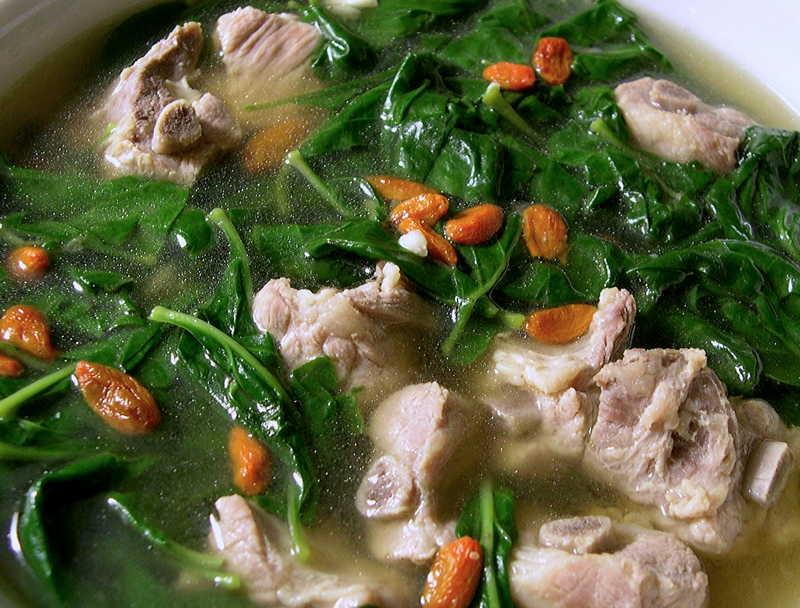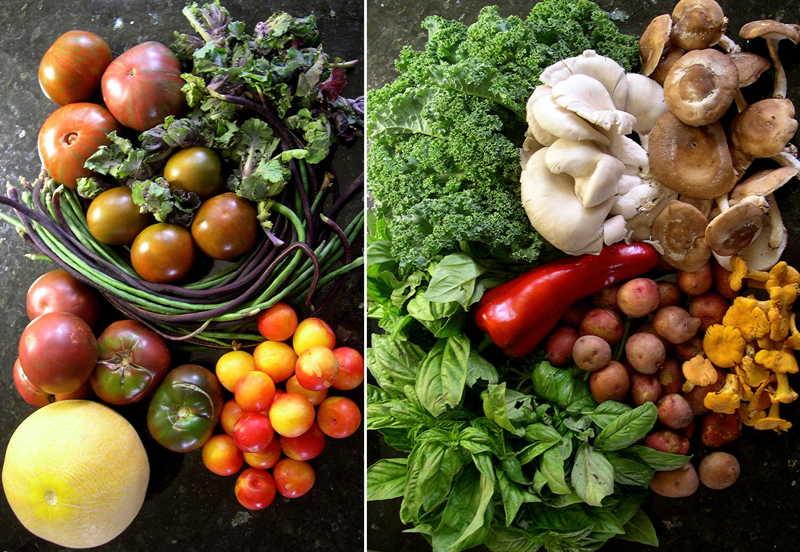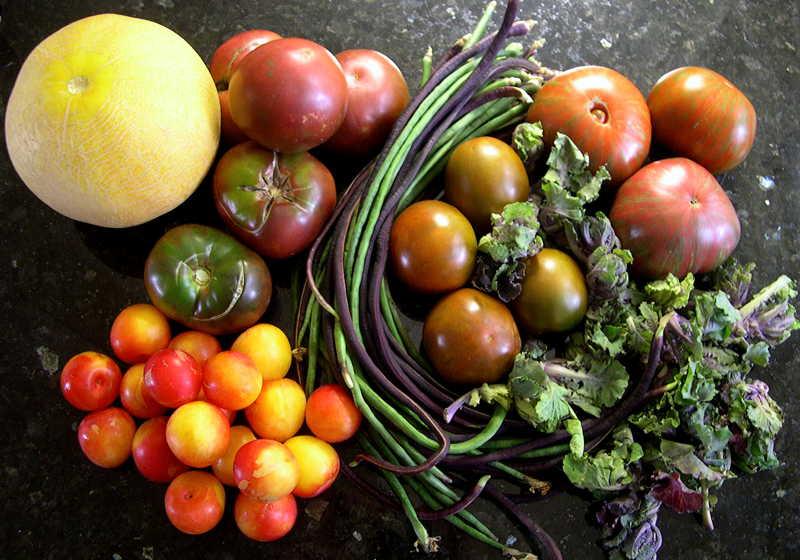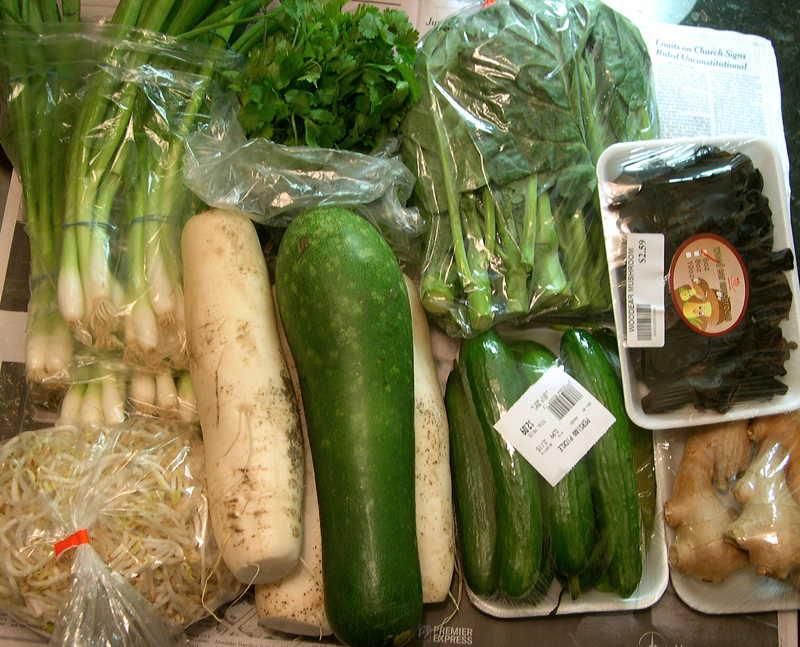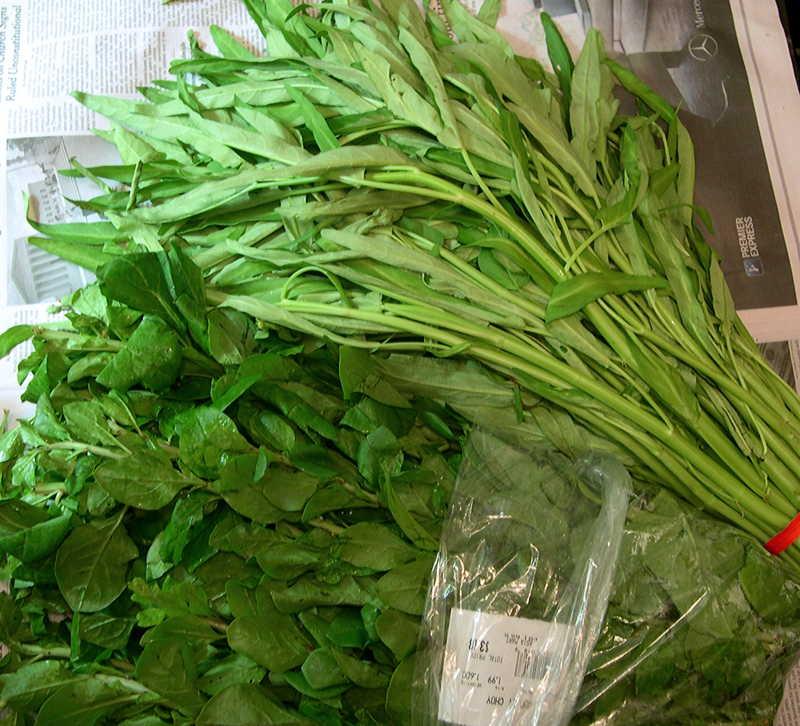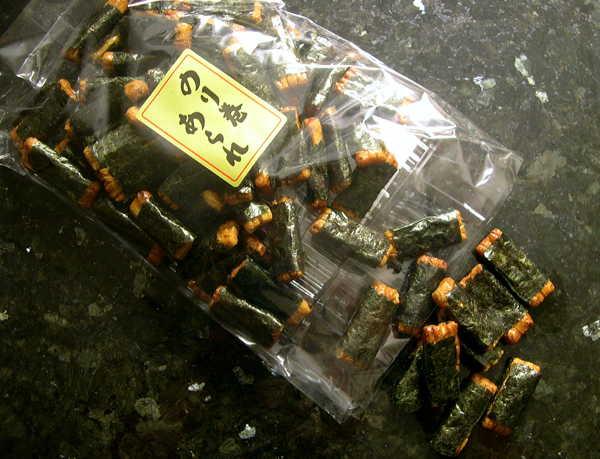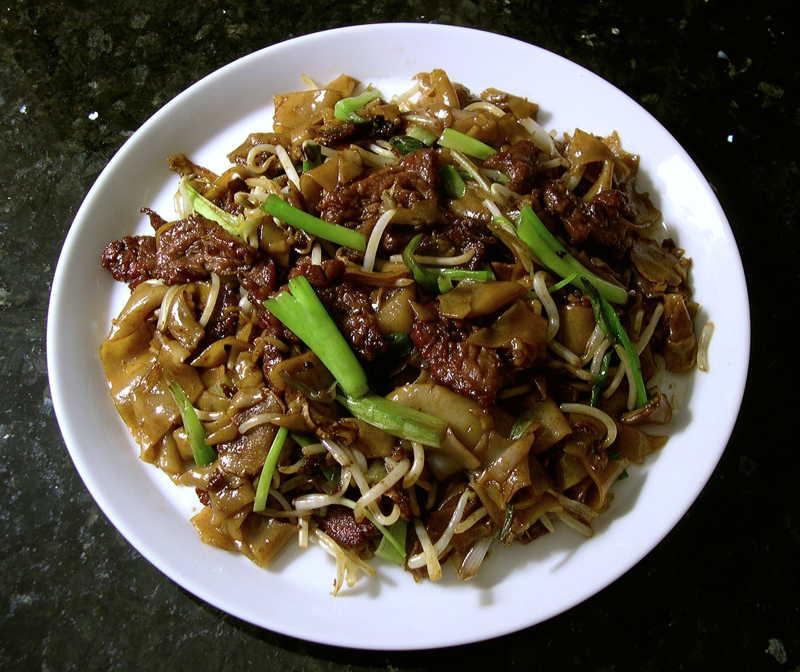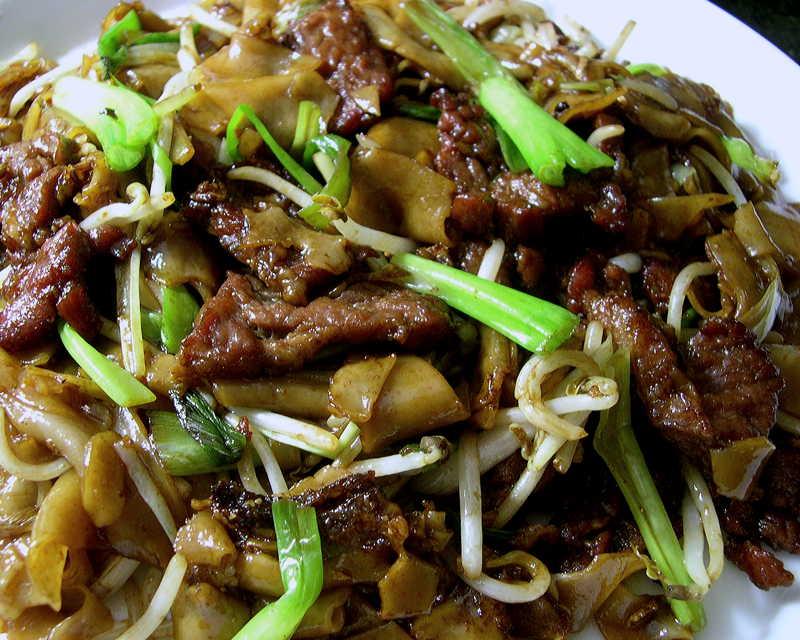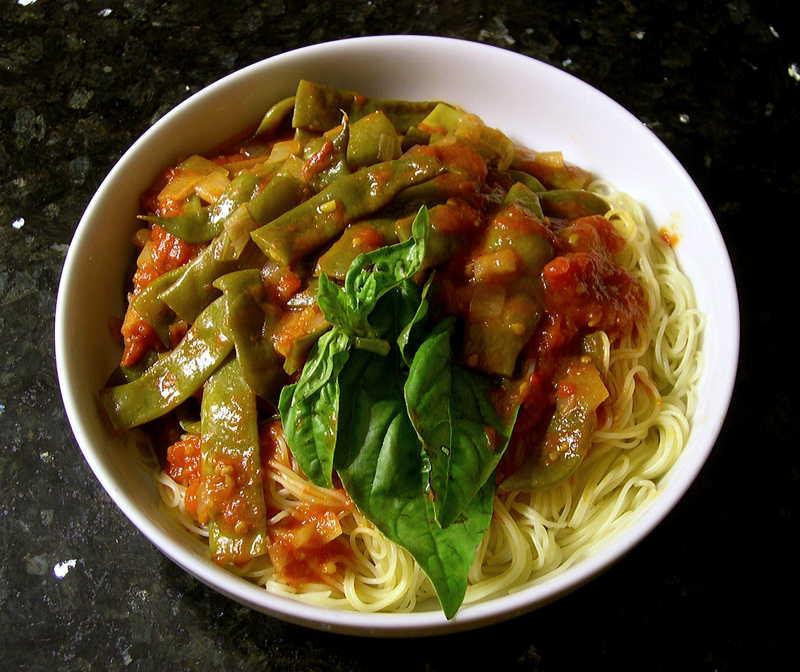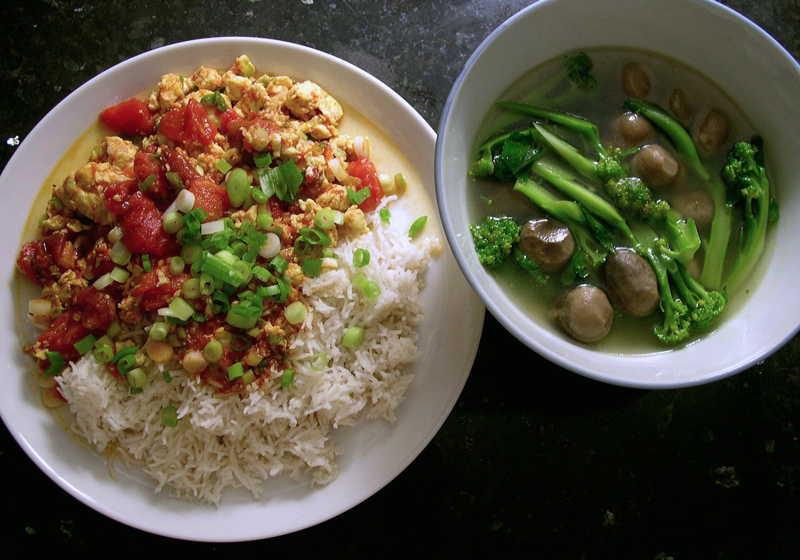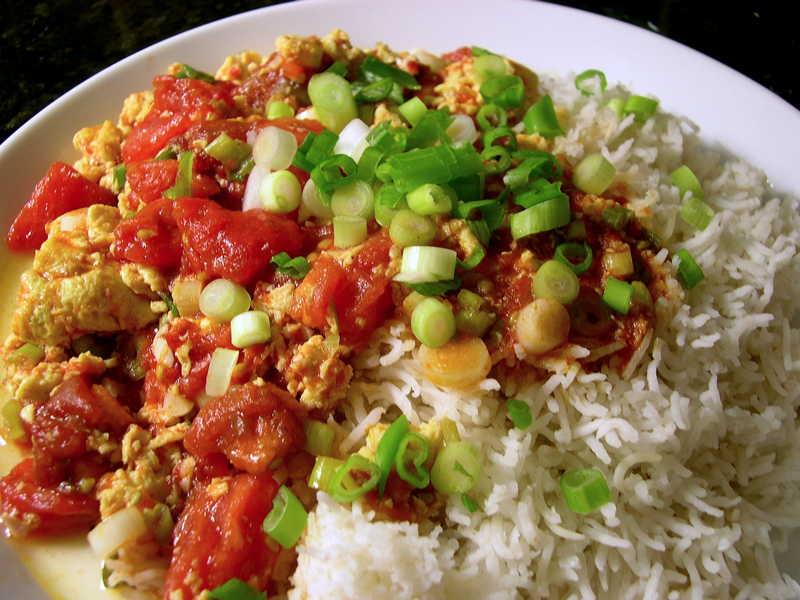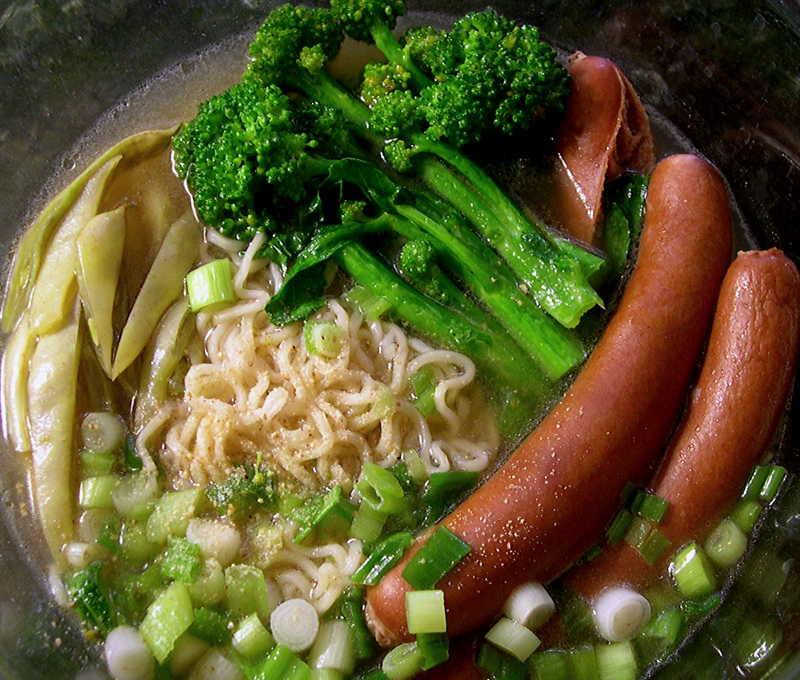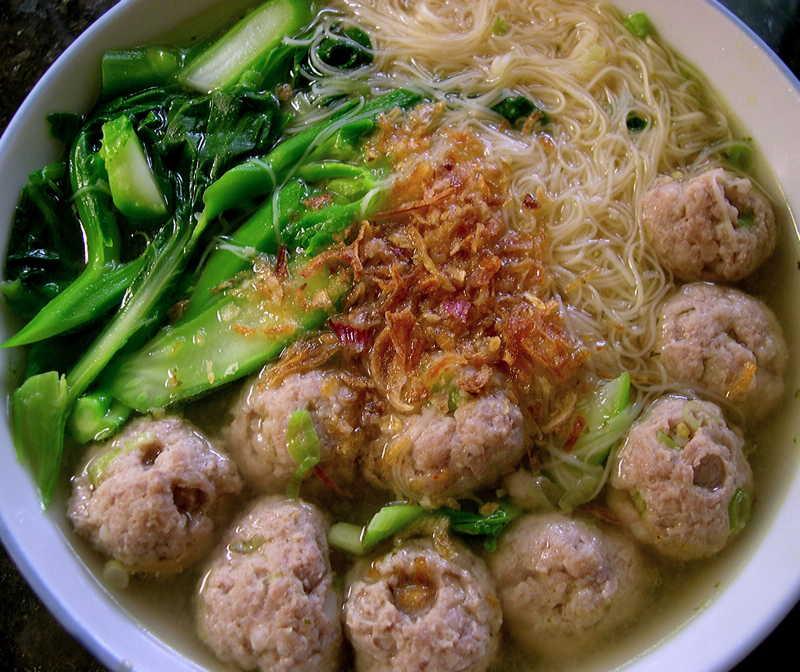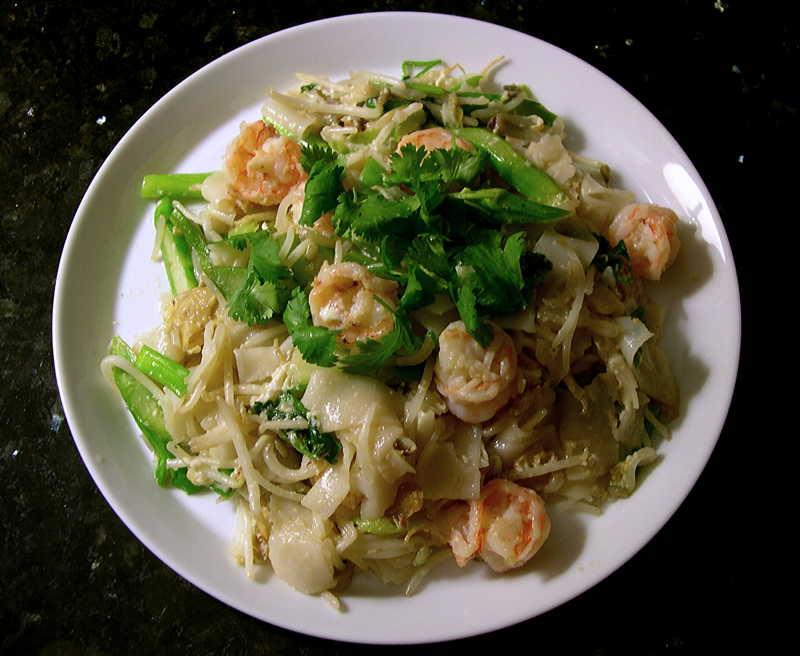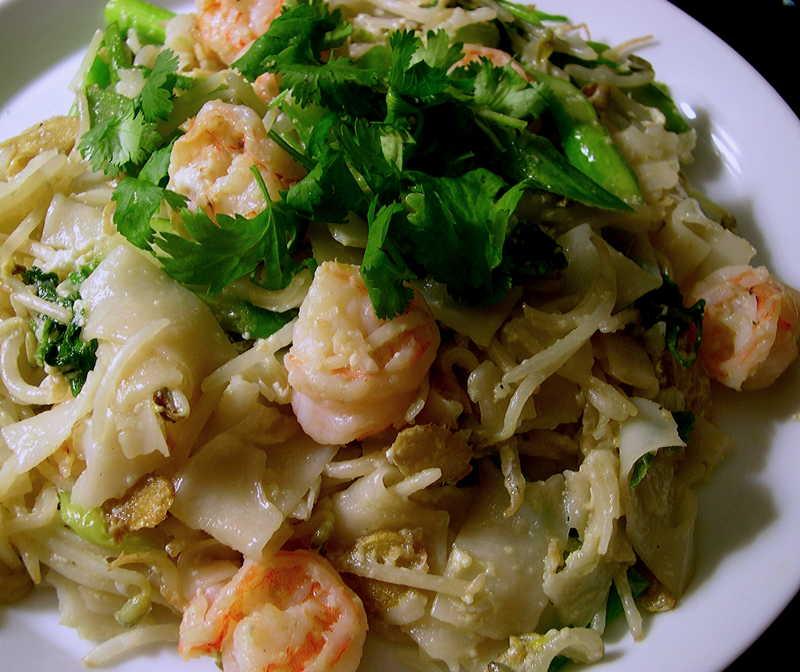-
Posts
3,810 -
Joined
-
Last visited
Content Type
Profiles
Forums
Store
Help Articles
Everything posted by huiray
-
A dish based on 金華玉樹雞 (gam1 waa4 juk6 syu6 gai1), an old-style Cantonese dish, but using Jamón Serrano. I've posted variations of this before. Simple chicken broth w/ mung bean sprouts, scallions & coriander leaves. Multiple bowls of white rice.
-
Steamed cod fillets, Teochew style. Cod fillets, pickled mustard (harm choy), Japanese Trifele tomatoes, salted plums + some of the pickling liquid, ginger, scallions, Thai-type hot chillies, shiitake mushrooms, good Shaohsing wine, bit of light soy sauce, peanut oil. Steam till done. transferred to fresh plate. Ong choy stir-fried w/ garlic & fermented bean curd (fu6 jyu5, fu yee; 腐乳), Cantonese-style. Oil, garlic, fu yee, ong choy (kangkong, water spinach, water morning glory, Ipomoea aquatica). The fu yee is pretty salty, no additional salt needed at all. Several bowls of white rice.
-
I'd like to have a copy of your book too. Please let us know in due course how one may purchase the book. Perhaps all's well that ends well in the end. :-) Your journey with your cookbook has been interesting.
-
Peanut oil, chopped smashed garlic, minced softened dried shrimp (har mai), sliced deboned chicken thigh, sliced peeled fuzzy squash, water, salt, simmer; pre-softened cellophane noodles, simmer; marinated shelled deveined shrimp w/ the marinade, cook till done. Plated w/ chopped coriander leaves. Shrimp marinated w/ Shaohsing wine, oil, dash of soy sauce, bit of salt.
-
The leftovers from here, simmered (augmented) w. more soft tofu chunks plus some water and sea salt and young kale leaves (de-ribbed, shredded by hand into small pieces), with roasted (wheat) vermicelli folded in at the end after shutting off the fire. Cherokee Purple & Chocolate Stripe tomatoes cooked w/ EV olive oil, yellow squash, green zucchini, garlic & shallots, fresh bay leaves, chiffonaded greens. Seasoning adjusted. Served w/ fedelini [De Cecco]. Had seconds, polished off everything.
-
Dejah, This has been asked by you before and we have exchanged some brief posts regarding the matter. I come from a primarily Cantonese-Hakka culinary tradition§§ as experienced in SE Asia, with a healthy dose of Nyonya influences plus a bit of Hokkien, Teochew and Hainanese influences as well.** Even then, I wouldn't say it was "traditional" to put garlic in my soups, but it was not uncommon. Mainland Cantonese soups would rarely contain garlic, true, but I believe there are some which do. Cantonese traditions translated to the West Coast of the USA maintain, in my understanding, a relatively rare use of garlic in soups but there are some recipes which do use it. Hakkas## use more garlic in their soups, and some folks add garlic to their chicken broth/stock when making it¶¶ – so when they make all sorts of soups where they use that chicken stock there will be, by default, a garlic note in them. Hokkien and Teochew soups in my experience don't use garlic that much, too, but there *are * some – like Bak Kut Teh – where garlic is used in COPIOUS amounts. Ditto the Canto-Hoklo version of BKT. Nyonya soups use garlic in various cases too, and some – like Itek Tim – use quite a lot of it especially if one were to look at the Northern Nyonya versions. Personally, I like the flavor profile of garlic in many of the E/SE Asian soups I make, so I end up adding it in not infrequently. However, I certainly don't *always* add garlic into my soups. Not at all. It depends on what I'm making and what my mood is. Even when I make Itek Tim (a.k.a. Kiam Chye Ark Th'ng) (in Hokkien), as just one example, sometimes I put in garlic, sometimes I don't. This doesn't mean that I view a dish as "anything goes". Rather, I think of many dishes (especially named dishes) as needing some core elements – but there is a lot of grey area around those core elements. Isn't that a common phenomenon, in all cuisines? BTW - consider trying adding a bit of garlic into some suitable soups of yours one day - just for the hell of it - and see if you like it or not... ** And, of course, in the midst of the culinary heritages of cuisines from the Indian subcontinent, Malay, Java, Sumatera, Britain, elsewhere in Asia and Europe especially Portugal, etc ¶¶ BTW, I generally don't add garlic into my chicken stocks. I might add garlic later when I am making a soup with that stock, however. :-) §§ More Cantonese than Hakka, with the Cantonese more HK/Canton rather than Toisan.@@ ## Note to most of the readers on eG, especially those in Canada - "Hakka" as used here refers to the actual Hakka community, NOT the meaning that has been attached to the term in a lot of Canada and North America, especially Toronto, where "Hakka" more often than not refers to INDIAN-CHINESE food. @@ "Toisan" is not synonymous with "Cantonese" as a general category; but is a subset of "Cantonese".
-
Dejah, I get the wolfberry/goji leaves (枸杞菜) from one of my local Chinese supermarkets. It's not always available, at least when I visit the place - the proprietress at this store knows my tastes and always alerts me to its presence when it is there when I walk in. :-) I've stuck stripped stems of it (with the tips and some leaves and offshoots left on the stems) into water several times before and let them grow roots but never seem able to actually then plant them, and they just "fade away" eventually. I stuck some of the stems from this most recent batch into another jar of water and I'll try to plant them this time! The second half of the bundle of leafy stems I got recently went into tonight's soup – done with fish balls [Venus brand] and soft tofu chunks plus some sliced fresh garlic in chicken broth, with a beaten egg drizzled in right at the end. Yum.
-
But of course. Not even the Chinese regard rice as an important part of EVERY meal. Many the meals are there where one slurps a bowl of wheat noodles in soup or in another noodle dish, for example, or even have banquets where the dishes are heavy on the meats and sometimes no rice is even brought out at all. And so on. Most European cuisines have very little to do with rice but are heavy on the potatoes and bread, as you know. (Northern Italians, as one example, might have more rice in their cuisine) Then there are interesting old quirks like some Chinese restaurants in France (or elsewhere) needing to provide bread for their patrons regardless of whatever was on the table; and any number of other tid-bits about stuff like that.
-
No problem. I simply asked if you had rice with it. All you had to say was "yes" or "no". That was it. I was simply curious. Everything else you said was in your own imagination.
-
Did you have any rice with that?
-
Mushroom stir-fry. Peanut oil, ginger, scallions, fresh blue oyster mushrooms, fresh shiitake mushrooms, fresh wood ear fungus, firm tofu (pressed further before cutting up), chicken stock. Green & purple Chinese long beans (Vigna unguiculata ssp. sesquipedale) stir fried w/ ground pork tossed w/ garlic+oil plus Shaohsing wine & some fish sauce. White rice.
-
Regarding the dish with brake: 7. 肉丝炒如意采 Pork Slivers Fried w Brake (Good Luck Vegetable) The last character is missing the grass/flower radical 艸. Shouldn't it be "菜"? My understanding is that "Good Luck Vegetable" (如意菜) is a somewhat generalized dish and is often made using bean sprouts plus other stuff like wood ear fungus &etc, i.e. it does not require brake? ETA: Brake is also commonly known as bracken.
-
Pork spare ribs & wolfberry leaves soup. Eaten w/ a piece of an "epi" loaf. Short-cut pork spare ribs cut into individual riblets, blanched and washed ("fei sui"). Water, the cleaned riblets, smashed garlic (Music), salt, chicken stock, simmer; dried goji berries/wolfberries, simmer; washed wolfberry leaves,¶ bring back to a simmer and cook for just a couple minutes more or so. ¶See here (scroll down) for a pic of the leaves on cut branches used in this soup. One just strips them off by running one's hand down the branch.
-
Heh. Smithy, I try myself too. :-) Thanks. I like the Saturn peaches, but I doubt I would always prefer them. They're a nice change from the normal ones. They ARE firmer than the "commonly-found" ones and quite fragrant. Sweetness - I guess they are sweeter, but good normal ones at the height of season are pretty good too. They dry out faster (going wrinkly) than the common ones, probably because of the greater surface area relative to volume of flesh. Skin maybe a little thicker, though. The ones I got were about 2.5 inches in diameter on average.
-
-
2015-0808. Broad Ripple Farmers' Market: Kalettes, basil, small Red Gold potatoes, Carmen Italian sweet pepper, Black Krim & Cherokee Purple tomatoes, Chocolate Stripe tomatoes, Early Golden plums. Carmel Farmers' Market: Purple & green Chinese long beans, blue oyster mushrooms. shiitake mushrooms, young kale, Japanese Trifele tomatoes, chanterelle mushrooms, Galia melon. Also an "epi" loaf, and pale blue & pale green shelled eggs (both not pictured). Asia Mart & Viet Hua: Fish paste, pork bones, short-cut pork spare ribs, canned unpeeled straw mushrooms, canned slender bamboo shoots, black sesame oil, fuzzy squash, water spinach (kangkong/ong choy), guo zi choy (wolfberry leaves), kai-lan, daikon, scallions (6 bunches at $1 for 3 bunches), coriander leaves, ginger, fresh woodear mushrooms, soft tofu, mung bean sprouts, [Asahi] nori maki arare (a kind of Japanese rice cracker wrapped with seaweed - very tasty, addictive); whole white pepper, pork neck bones.
-
Dry-style 薑蔥牛河, Ginger-scallion (stir-fried) beef hor (fun). More commonly called 幹炒牛河, dry stir-fried beef hor (fun). Hadn't made this at home for a few months. Did it this time w/ sliced inner skirt steak, velveted/tenderized/marinated.
-
Regarding Jinhua ham – in the USA it has been said by many that a substitute for it is the genuine Smithfied ham (dry cured). However, for myself I tend to use Jamón Serrano as a substitute, OR dry-cured ham "in the style of Jinhua Ham" produced in NY (e.g. Brooklyn) and even labeled as "金華火腿" (i.e. Jinhua ham). (Jamón Iberico is too expensive for regular use) I personally prefer Jamón Serrano because it is slightly less salty, can be sliced to order (from certain local charcuteries) and is a bit more "pliable" than the Jinhua-like ham (which also needs to be sliced thinner than what I get in the packages I can get in my Chinese groceries).
-
Ah, I see. Thanks for the clarification. If one is interested, here's a reasonable place to start for a (non-exhaustive) overview of food found in Malaysia. :-)
-
-
Norm, I am wondering what this is. I took a quick look using Google - and - is this sort-of what you mean? http://www.foodbeast.com/news/10-steak-seasonings/ (the last one of the ten) If so I'm not entirely sure what makes it specifically "Malaysian" rather than "Thai" or "Indonesian" or even "South East Asian" ? (That list of steak seasonings also has a bunch of combinations reducing entire national cuisines to somewhat dubious groupings of stuff that don't seem especially distinctive or specific...)
-
A batch of 番茄炒蛋 (stir-fried eggs and tomatoes). See here for a previous rendition. White rice. Sprouting broccoli & unpeeled straw mushrooms [Asian Best] in chicken broth.
-
Some meals. "Ibumie Penang Lad Mee 'Perisa Lada Pedas' " with Dietz & Watson beef franks, broccoli, Dragon Tongue beans, scallions, extra white pepper. Pork meatballs (minced fatty pork, fish sauce, generous panko crumbs, chopped scallions, ground white pepper, splashes of this-and-that) in chicken stock w/ kai-lan, very fine min6 sin3 (a bundle softened directly in the hot broth/soup in the pot after turning the fire off), deep-fried shallots. Ginger & scallion shrimp ho fun. Hot oil/pan, some ginger, shrimps, toss, remove & reserve. Pan on full flame, ginger, garlic, half of the trimmed scallions, sliced kai-lan stems, ho fun ribbons/strips, fish sauce, hua tiew Shaohsing wine, chicken stock, mung bean sprouts, rest of the trimmed scallions, coriander leaves, the reserved shrimp, egg white beaten w/ some water. Plated, dressed w/ coriander leaves.
-
Nina Compton has opened her own restaurant: Compère Lapin, in New Orleans. http://www.bravotv.com/the-daily-dish/nina-compton-launches-new-restaurant-in-new-orleans http://www.nola.com/dining/index.ssf/2015/05/compere_lapin_opening_nina_com.html http://old77hotel.com/nina/ http://comperelapin.com/
-
Nick Elmi & Laurel update: Still doing well. http://www.gq.com/gallery/25-best-restaurants-of-2015#9 http://www.jamesbeard.org/blog/2015-restaurant-and-chef-award-semifinalists



